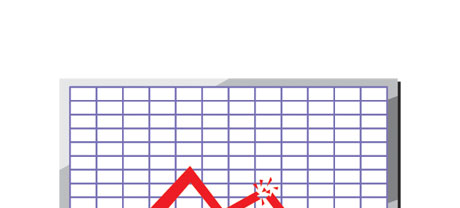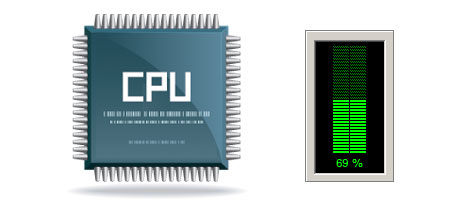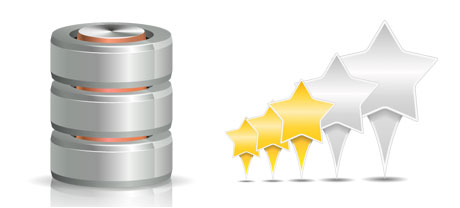For those who have a website or perhaps an web app, pace is vital. The faster your site functions and also the speedier your applications perform, the better for everyone. Given that a site is only a set of data files that talk with one another, the systems that store and work with these data files have a huge role in site functionality.
Hard drives, or HDDs, have been, until recent times, the most trustworthy devices for saving data. Nonetheless, recently solid–state drives, or SSDs, are already gaining popularity. Have a look at our comparability chart to determine whether HDDs or SSDs are more suitable for you.
1. Access Time
A result of a radical new way of disk drive general performance, SSD drives enable for much quicker data file accessibility speeds. With an SSD, data file access times are much lower (only 0.1 millisecond).
The concept driving HDD drives goes all the way back to 1954. And even though it has been considerably processed throughout the years, it’s still no match for the innovative concept driving SSD drives. Using today’s HDD drives, the best file access speed you are able to reach can vary in between 5 and 8 milliseconds.
2. Random I/O Performance
Thanks to the same radical approach enabling for quicker access times, it is possible to enjoy improved I/O effectiveness with SSD drives. They’re able to accomplish two times as many operations within a specific time when compared with an HDD drive.
An SSD can manage at least 6000 IO’s per second.
With an HDD drive, the I/O performance progressively increases the more you apply the hard drive. Having said that, as soon as it gets to a specific limitation, it can’t get quicker. And due to the now–old technology, that I/O limitation is noticeably lower than what you can have with an SSD.
HDD can only go as much as 400 IO’s per second.
3. Reliability
The absence of moving elements and rotating disks in SSD drives, as well as the recent developments in electrical interface technology have led to a considerably reliable data storage device, with a normal failure rate of 0.5%.
As we have observed, HDD drives rely on rotating disks. And something that takes advantage of lots of moving elements for extended periods of time is more likely to failing.
HDD drives’ typical rate of failure varies somewhere between 2% and 5%.
4. Energy Conservation
SSD drives work practically silently; they don’t make excessive heat; they don’t demand more air conditioning solutions and also take in far less power.
Trials have established the normal electric power utilization of an SSD drive is somewhere between 2 and 5 watts.
As soon as they have been constructed, HDDs have been extremely electrical power–greedy products. When you have a server with lots of HDD drives, it will boost the month to month power bill.
Typically, HDDs take in somewhere between 6 and 15 watts.
5. CPU Power
The speedier the file access speed is, the faster the data file demands will likely be processed. It means that the CPU do not need to reserve resources waiting for the SSD to respond back.
The regular I/O delay for SSD drives is 1%.
When using an HDD, you must invest time awaiting the outcome of one’s data file request. Because of this the CPU will be idle for additional time, looking forward to the HDD to respond.
The common I/O delay for HDD drives is approximately 7%.
6.Input/Output Request Times
In real life, SSDs carry out as wonderfully as they have for the duration of RD Network Corporation’s lab tests. We competed a complete platform back up using one of our production machines. During the backup operation, the common service time for any I/O requests was indeed below 20 ms.
With the same server, but this time built with HDDs, the end results were very different. The average service time for any I/O query fluctuated between 400 and 500 ms.
7. Backup Rates
Another real–life enhancement is the rate at which the back–up has been produced. With SSDs, a web server back up today can take under 6 hours by making use of RD Network Corporation’s hosting server–designed software.
Alternatively, on a server with HDD drives, a similar data backup takes 3 to 4 times as long to finish. An entire back up of an HDD–equipped server typically takes 20 to 24 hours.
The Linux VPS hosting packages plus our standard Linux cloud packages accounts have SSD drives automatically. Be part of our RD Network Corporation family, to see the way we can help you enhance your web site.
Hepsia
- Live Demo
Service guarantees
- Our Virtual Private Servers provide no setup fees and function in a reliable network offering 99.9% of uptime. Full root access to the server warranted.
Compare our prices
- Review the allocations and parameters coming with our Virtual Private Servers. You could start off with a cheaper VPS Hosting package and upgrade with just a mouse click as your requirements increase.
- Compare our hosting plans
Contact Us
- Contact us 24/7/365 by email or by employing our extra–fast ticketing system. Our techs are prepared to respond to any queries in up to 1 hour.















